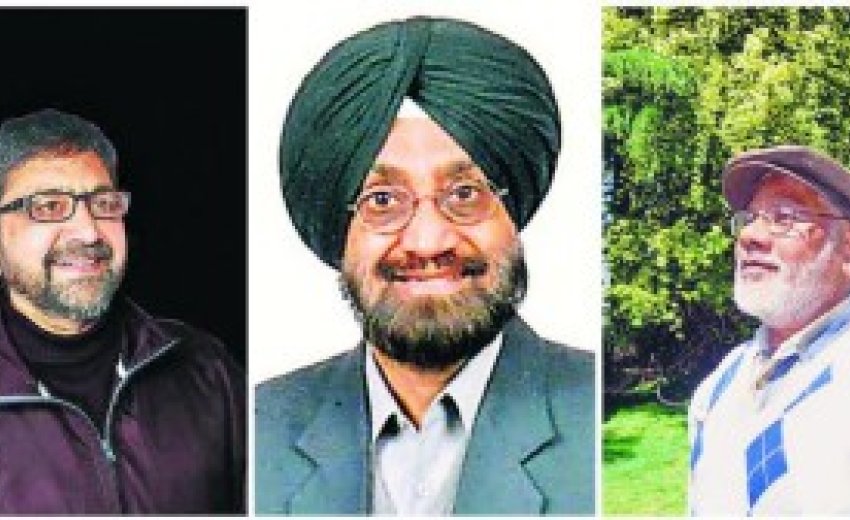Apr 03, 2016: While documenting the history of Partition, historians faced a paucity of information and turned to the fiction of Saadat Hasan Manto, Rajinder Singh Bedi, and others to bridge the fissures. A new breed of historians is grappling with the dynamic Punjabi society and finding ways of writing the people’s history sans the one-community prism applied by the mainstream historians in the two Punjabs.
 |
| (From left) Ishwar Dayal Gaur; Surinder Singh; and Raj Kumar Hans (HT Photos) |
Among the scholars playing a positive role in this direction is socio-cultural historian Ishwar Dayal Gaur, who points out that the dominant craft of history is not able to free itself from the colonial pattern communal history. “Punjabiyat is conspicuous by its absence in the history books on Punjab. The socio-cultural ethos of Punjab is too nuanced to be unfolded and measured simply on the basis of empirical and hard facts that present Punjab’s people simply as Hindu, Muslim and Sikh, or Pakistani Punjabis and Indian Punjabis,” he says.
Nanak-Farid model
Gaur, professor of history in the Panjab University evening college, has opened a fresh dialogue in the paper, ‘Forgotten Makers of Punjab: Discovering Indigenous Paradigm of History’. This outside-the-box study was presented at Sardar Mahan Singh Dhesi Annual Lecture last week at Guru Nanak Dev University, Amritsar. Gaur’s is a case of practising what he preaches, because he has penned two significant books — ‘Martyr As Bridegroom: A Folk Representation of Bhagat Singh’ and ‘Society, Religion and Patriarchy: Exploring Medieval Punjab through Hir Waris’ — that bring forth the shared history of the composite culture of Punjab, gleaned from folklore.
In the recent paper, he has drawn attention to the inclusive concept of the Nanak-Farid model. Guru Nanak (1469-1539) had visited Pakpattan to collect the Bani of the first Punjabi Sufi saint-poet, Baba Farid (1173-1265), and bequeathed to us the literary and philosophical legacy of Punjab. Incidentally, similar work has been done by Pakistani Punjabi scholar Najm Hosain Syed.
 |
| A scene from the partition of Punjab, 1947. (Photo: Wikimedia Commons) |
“For historians working on Punjab history, Partition is something that happened just the other day, because we are dealing with thousands of years of history that cannot be written with narrow sectarian and national ideologies. We have to rise above them, says Surinder Singh, former chairperson of the Panjab University department of history. He recalls two seminars organised at the department in Chandigarh, in which Pakistani scholars also participated and led to the publication of two volumes — ‘Sufism in Punjab’ and ‘Popular Literature and Pre-Modern Societies in South Asia’ — he co-edited with Gaur.
Folklore archives
This approach to history lays stress on the study of indigenous resources such as folklore and other vernacular texts to include the forgotten makers of Punjab. Raj Kumar Hans, professor of history at MS University, Baroda, says: “I went to vernacular texts to write ‘Reimagining 19thcentury’ to study the radicalism of Wazir Singh and the reshaping of gender roles in the writings of woman Dalit poet Peero Preman.”
Similarly Gaur turns to the vernacular in tracing the forgotten makers of the land of five rivers: Dullah Bhatti, who challenged the Mughal state and saved the honour of Hindu girls from feudal lords; Sufi poet Shah Husain, who spiritualised the domestic space of Punjab by bringing Hir, Ranjha and spinning-wheel (charkha) in his vernacular kafis; Bulleh Shah, who obliterated the distinction between the Prophet, Lord Krishna, and Ranjha; Shah Mohammed, who portrayed the broad canvas of the Khalsa Raj of Maharaja Ranjit Singh, for whom the poet had tremendous regard; and Qadiryaar, also a court poet of the Maharaja, who took upon himself to write the saga of an ascetic prince called Puran Bhagat.

